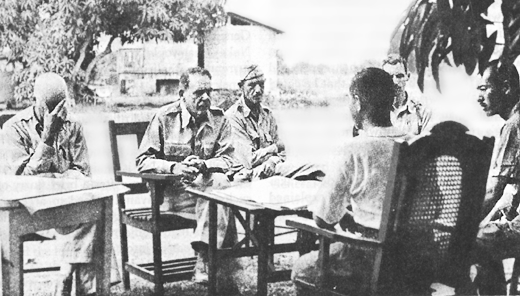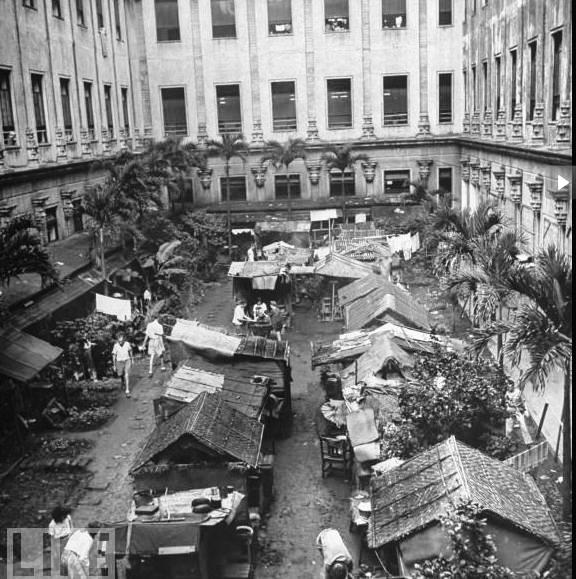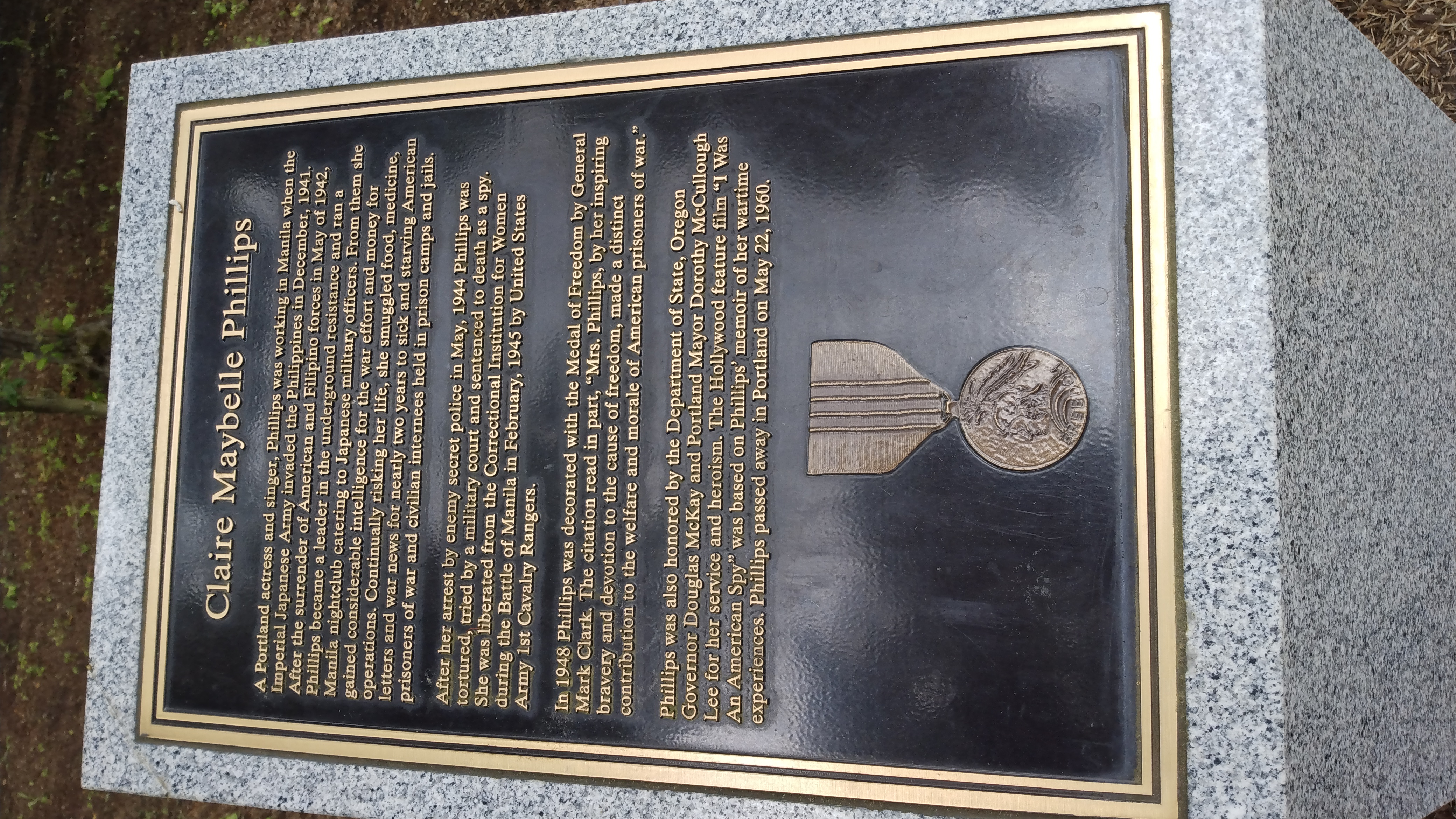|
Margaret Utinsky
Margaret Elizabeth Doolin "Peggy" Utinsky (August 26, 1900 – August 30, 1970) was an American nurse who worked with the Filipino resistance movement to provide medicine, food, and other items to aid Allied prisoners of war in the Philippines during World War II. She was recognized in 1946 with the Medal of Freedom for her actions. Most information about her World War II activities comes from her autobiography, ''Miss U'', and is not verifiable from other sources. Biography Utinsky was born in St. Louis, Missouri and grew up on a wheat farm in Canada. In 1919, she married John Rowley. He died the following year, leaving her with an infant son, Charles. On a sojourn to the Philippines in the late 1920s, she met and fell in love with John "Jack" Utinsky, a former Army captain who worked as a civil engineer for the U.S. government. They married in 1934. Margaret and Jack settled into life in Manila. As the likelihood of a Japanese attack grew in the Far East, the U.S. military ... [...More Info...] [...Related Items...] OR: [Wikipedia] [Google] [Baidu] |
Lakewood, California
Lakewood is a city in Los Angeles County, California, United States. The population was 80,048 at the 2010 United States Census, 2010 census. It is bordered by Long Beach on the west and south, Bellflower, California, Bellflower on the north, Cerritos, California, Cerritos on the northeast, Cypress, California, Cypress on the east, and Hawaiian Gardens on the southeast. Major thoroughfares include Lakewood (California State Route 19, SR 19), Bellflower, and Del Amo Boulevards and Carson and South Streets. The San Gabriel River Freeway (I-605) runs through the city's eastern regions. History Lakewood is a post-World War II planned community. Developers Louis Boyar, Mark Taper and Ben Weingart are credited with "altering forever the map of Southern California." Begun in late 1949, the completion of the developers' plan in 1953 helped in the transformation of mass-produced housing from its early phases in the 1930s and 1940s to the reality of the postwar 1950s. WWII veterans could ... [...More Info...] [...Related Items...] OR: [Wikipedia] [Google] [Baidu] |
Bataan Death March
The Bataan Death March (Filipino: ''Martsa ng Kamatayan sa Bataan''; Spanish: ''Marcha de la muerte de Bataán'' ; Kapampangan: ''Martsa ning Kematayan quing Bataan''; Japanese: バターン死の行進, Hepburn: ''Batān Shi no Kōshin'') was the forcible transfer by the Imperial Japanese Army of between 60,000 and 80,000 American and Filipino prisoners of war from Saysain Point, Bagac, Bataan and Mariveles to Camp O'Donnell, Capas, Tarlac, via San Fernando, Pampanga, the prisoners being forced to march despite many dying on the journey. The transfer began on April 9, 1942, after the three-month Battle of Bataan in the Philippines during World War II. The total distance marched from Mariveles to San Fernando and from the Capas Train Station to Camp O'Donnell is variously reported by differing sources as between . Sources also report widely differing prisoner of war casualties prior to reaching Camp O'Donnell: from 5,000 to 18,000 Filipino deaths and 500 to 650 American death ... [...More Info...] [...Related Items...] OR: [Wikipedia] [Google] [Baidu] |
United States Army Criminal Investigation Command
The United States Army Criminal Investigation Division (USACID), previously known as the United States Army Criminal Investigation Command (USACIDC) is the primary federal law enforcement agency of the United States Department of the Army. Its primary function is to investigate felony crimes and serious violations of military law & the United States Code within the US Army. The division is a separate military investigative force with investigative autonomy; CID special agents, both military and civilian, report through the CID chain of command to the USACID Director, who reports directly to the Under Secretary of the Army and the Secretary of the Army. Unlike their counterparts at OSI, NCIS and CGIS, Army CID does not have primary counterintelligence responsibilities. Overview The division does not charge individuals with crimes; instead, CID investigates allegations and turns official findings over to the appropriate command and legal authority for disposition and adjudication ... [...More Info...] [...Related Items...] OR: [Wikipedia] [Google] [Baidu] |
Missionary Society Of St
A missionary is a member of a religious group which is sent into an area in order to promote its faith or provide services to people, such as education, literacy, social justice, health care, and economic development.Thomas Hale 'On Being a Missionary' 2003, William Carey Library Pub, . In the Latin translation of the Bible, Jesus Christ says the word when he sends the disciples into areas and commands them to preach the gospel in his name. The term is most commonly used in reference to Christian missions, but it can also be used in reference to any creed or ideology. The word ''mission'' originated in 1598 when Jesuits, the members of the Society of Jesus sent members abroad, derived from the Latin ( nom. ), meaning 'act of sending' or , meaning 'to send'. By religion Buddhist missions The first Buddhist missionaries were called "Dharma Bhanaks", and some see a missionary charge in the symbolism behind the Buddhist wheel, which is said to travel all over the earth brin ... [...More Info...] [...Related Items...] OR: [Wikipedia] [Google] [Baidu] |
Battle Of Manila (1945)
The Battle of Manila ( fil, Labanan sa Maynila; ja, マニラの戦い; es, Batalla de Manila; ) was a major battle of the Philippine campaign of 1944–45, during the Second World War. It was fought by forces from both the United States and the Philippines against Japanese troops in Manila, the capital city of the Philippines. The month-long battle, which resulted in the death of over 100,000 civilians and the complete devastation of the city, was the scene of the worst urban fighting fought by American forces in the Pacific theater. Japanese forces committed mass murder against Filipino civilians during the battle and American firepower killed many people. Japanese resistance and American artillery also destroyed much of Manila's architectural and cultural heritage dating back to the city's founding. Manila became one of the most devastated capital cities during the entire war, alongside Berlin and Warsaw. The battle ended the almost three years of Japanese military occupati ... [...More Info...] [...Related Items...] OR: [Wikipedia] [Google] [Baidu] |
Santo Tomas Internment Camp
Santo Tomas Internment Camp, also known as the Manila Internment Camp, was the largest of several camps in the Philippines in which the Japanese interned enemy civilians, mostly Americans, in World War II. The campus of the University of Santo Tomas in Manila was utilized for the camp, which housed more than 3,000 internees from January 1942 until February 1945. Conditions for the internees deteriorated during the war and by the time of the liberation of the camp by the U.S. Army many of the internees were near death from lack of food. Background Japan attacked the Philippines on December 8, 1941, the same day as its raid on Pearl Harbor (on the Asian side of the International Date Line). American fighter aircraft were on patrol to meet an expected attack, but ground fog delayed the Japanese aircraft on Formosa. When the attack finally came, most of the American air force was caught on the ground, and destroyed by Japanese bombers. On the same day, the Japanese invaded several ... [...More Info...] [...Related Items...] OR: [Wikipedia] [Google] [Baidu] |
Hukbalahap
The Hukbong Bayan Laban sa Hapon (), better known by the acronym Hukbalahap, was a Communism, communist Guerrilla warfare, guerrilla movement formed by the farmers of Central Luzon. They were originally formed to Philippine resistance against Japan, fight the Imperial Japanese Army, Japanese, but extended their fight into a rebellion against the Philippine government, known as the Hukbalahap Rebellion, in 1946. It was put down through a series of reforms and military victories by Secretary of National Defense (Philippines), Defense Secretary, and later President, Ramon Magsaysay. A monument dedicated to the Huks in Cabiao, Nueva Ecija, was constructed to honor their actions during World War II. Constituted in March 1942, the Hukbalahap was to be part of a broad united front resistance to the Japanese occupation of the Philippines. This original intent is reflected in its name. By 1950, the Partido Komunista ng Pilipinas-1930, Communist Party of the Philippines (PKP) had resolve ... [...More Info...] [...Related Items...] OR: [Wikipedia] [Google] [Baidu] |
Claire Phillips
Claire Maybelle Snyder (December 2, 1907 – May 22, 1960), also known as Clara Fuentes, Clara Phillips, Dorothy Fuentes as well as High Pockets, was an American spy, entertainer, club owner, and writer most noted for her exploits in the Japanese-occupied Philippines. She was portrayed by Ann Dvorak in the 1951 movie ''I Was an American Spy''. She was also the author of ''Manila Espionage'', a book about her wartime experiences. In 1951, she was awarded the Medal of Freedom. Many of Phillips' statements and claims about spying were later determined to be "without foundation," although in 1957 she was awarded $1,349.21 by the United States Court of Claims in compensation for assistance she had provided to American prisoners of war and Filipino resistance movements. Early years Claire Maybelle Snyder was born on December 2, 1907, in Michigan to Jesse Edgar Snyder, a marine engineer, and his wife Mable. Claire's family moved to Portland, Oregon, when she was a young child. She a ... [...More Info...] [...Related Items...] OR: [Wikipedia] [Google] [Baidu] |
Filipino People
Filipinos ( tl, Mga Pilipino) are the people who are citizens of or native to the Philippines. The majority of Filipinos today come from various Austronesian ethnolinguistic groups, all typically speaking either Filipino, English and/or other Philippine languages. Currently, there are more than 185 ethnolinguistic groups in the Philippines; each with its own language, identity, culture and history. Names The name ''Filipino'', as a demonym, was derived from the term ''Las Islas Filipinas'' ("the Philippine Islands"), the name given to the archipelago in 1543 by the Spanish explorer and Dominican priest Ruy López de Villalobos, in honor of Philip II of Spain (Spanish: ''Felipe II''). During the Spanish colonial period, natives of the Philippine islands were usually known by the generic terms ''indio'' ("Indian") or ''indigenta'' ("indigents"). However, during the early Spanish colonial period the term ''Filipinos'' or ''Philipinos'' was sometimes used by Spanish writers ... [...More Info...] [...Related Items...] OR: [Wikipedia] [Google] [Baidu] |
Prisoners Of War
A prisoner of war (POW) is a person who is held Captivity, captive by a belligerent power during or immediately after an armed conflict. The earliest recorded usage of the phrase "prisoner of war" dates back to 1610. Belligerents hold prisoners of war in custody for a range of legitimate and illegitimate reasons, such as isolating them from the enemy combatants still in the field (releasing and Repatriation, repatriating them in an orderly manner after hostilities), demonstrating military victory, punishing them, prosecuting them for war crimes, exploitation of labour, exploiting them for their labour, recruiting or even Conscription, conscripting them as their own combatants, collecting military and political intelligence from them, or Indoctrination, indoctrinating them in new political or religious beliefs. Ancient times For most of human history, depending on the culture of the victors, enemy fighters on the losing side in a battle who had surrendered and been taken as ... [...More Info...] [...Related Items...] OR: [Wikipedia] [Google] [Baidu] |
Naomi Flores
Naomi Flores (1921-2013) (code name Looter) was active in the resistance to the Japanese occupation of the Philippines in World War II. Flores was a member of the "Miss U Spy Ring." Working clandestinely and at great risk to herself, she delivered life-saving supplies and messages to American and Filipino prisoners of war in prison camps. She later married an American and moved to the United States. She was honored by the United States with a Medal of Freedom in 1948. Early life According to her daughter, Flores was born in Baguio, Philippines. She was an orphan and was raised in the household of a retired American Army officer, William E. Dosser. She was an Igorot, the Indigenous peoples in the mountains of Luzon Island. When Japan invaded the Philippines in December 1941, Flores was a 20-year old hairdresser in a beauty salon in Manila. Camp O'Donnell In May 1942, Flores met Margaret "Peggy" Utinsky at the beauty salon. Utinsky was an American citizen who had avoided dete ... [...More Info...] [...Related Items...] OR: [Wikipedia] [Google] [Baidu] |
Raid At Cabanatuan
The Raid at Cabanatuan ( fil, Pagsalakay sa Cabanatuan), also known as the Great Raid ( fil, Ang Dakilang Pagsalakay, link=no), was a rescue of Allied prisoners of war (POWs) and civilians from a Japanese camp near Cabanatuan, Nueva Ecija, Philippines. On January 30, 1945, during World War II, United States Army Rangers, Alamo Scouts and Filipino guerrillas liberated more than 500 from the POW camp. After the surrender of tens of thousands of American troops during the Battle of Bataan, many were sent to the Cabanatuan prison camp after the Bataan Death March. The Japanese shifted most of the prisoners to other areas, leaving just over 500 American and other Allied POWs and civilians in the prison. Facing brutal conditions including disease, torture, and malnourishment, the prisoners feared they would be executed by their captors before the arrival of General Douglas MacArthur and his American forces returning to Luzon. In late January 1945, a plan was developed by S ... [...More Info...] [...Related Items...] OR: [Wikipedia] [Google] [Baidu] |








